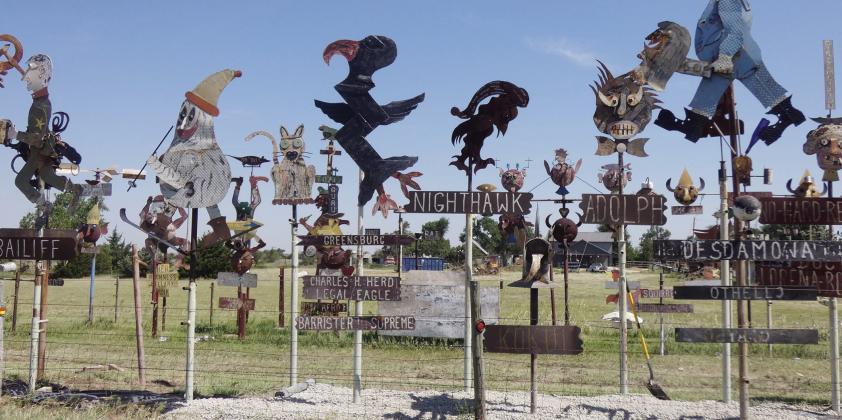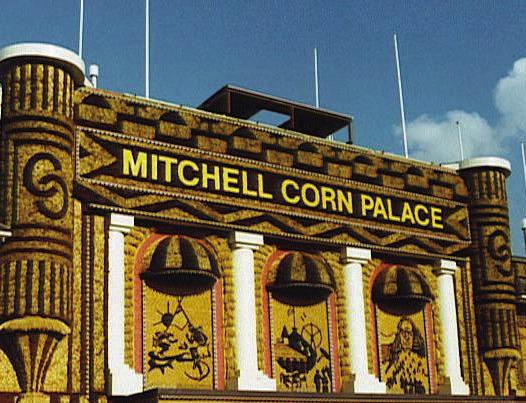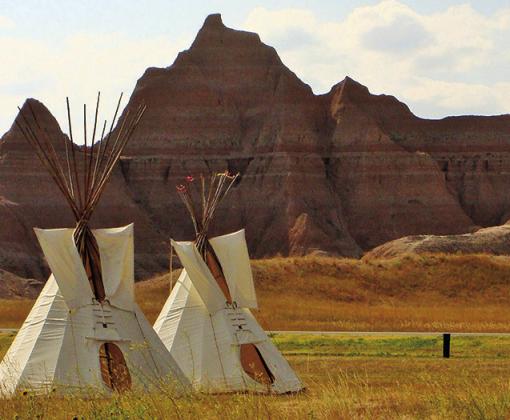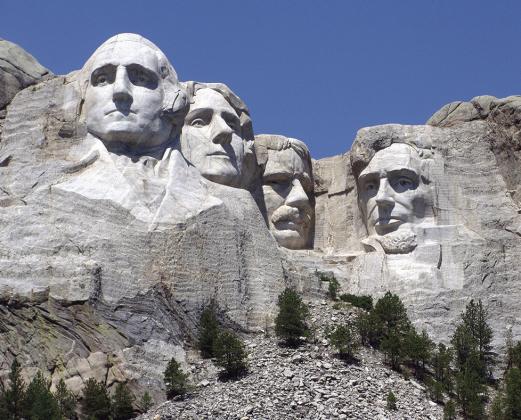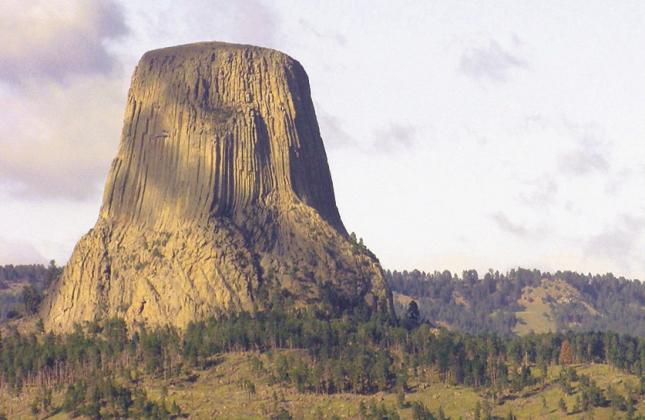In the 1980s and ’90s, I was eager to get to the Golden West. Rocky Mountains National Park. The Tetons. Yellowstone. Grand Canyon. Zion and the other four splendiferous national parks in Utah. The price of getting there was the long drive through Kansas, or Nebraska, or South Dakota. If I had been in the back seat, I would have been kicking the driver and demanding, “Are we there yet? Are we there yet?”
Shirley, on the other hand, from the beginning was a fan of places like the Flint Hills of eastern Kansas that roll along barely higher than the surrounding prairie. Eventually she convinced me there is more to them than I had recognized. Grass, for example. We are not talking about Kentucky blue or creeping red fescue lawn grasses. The tall grass prairie consists of varieties that sink roots deep into fertile soil that helps them grow up to eight feet. There are also mid-grasses that are drought-tolerant and can grow on the slopes and short grasses adapted to the rocky soil of hilltops. Grasses in the Flint Hills draw calcium from underlying limestone that provides more nutritional value than the same varieties
growing in the surrounding prairie. This makes it great cattle country. The premium grass accounts for the premium grass-fed beef that comes from there. Paying attention to 1,000 miles of grass could evolve into a fascinating hobby.
Or, maybe not.
Still, there are other, slightly more fascinating things in Kansas. Along I-70, for example, is my favorite billboard:
See the Rattlesnakes
Pet the Baby Pigs
I read that as one sentence. We have never stopped to see the snakes pet the pigs, though I’m sure it would be entertaining.
Fortunately, not everything in Kansas is as dull as watching grass grow or reading billboards. Passing through Mullinvile, population about 250, we saw some rusty iron sculptures right at the side of the road. We stopped for a quick look and a chat with a local who was installing still more. He said about 200 of them had been created by M.T. Liggett, a recently deceased farmer who had bequeathed them to the town. They established a park in which to erect the primitive-style, often satirical “art.” There was a chance that it might create the first and only tourist attraction within 100 miles. Eventually. There wasn’t any traffic on Rt. 400 other than us and a tractor approaching from the north on the county road.
Dodge City, on the other hand, draws on its notorious past as depicted in Western movies and the old Gunsmoke TV series. You can visit Long Branch Saloon where Miss Kitty plied her trade. It is now the home of some law offices and a pizza parlor. Or Boot Hill, the cemetery where the gunfight losers were buried with their boots on. Dodge City was the rail head where cattle continued to their ultimate destiny at the Chicago stockyards and cowboys disposed of three months’ pay in three days. Today, beef is processed right at Dodge before being shipped. There is a monumental statue of El Capitan, representative of all the longhorn steers responsible for the prosperity of both the cowboys and the town. There are also statues of Wyatt Earp and Doc Holliday who tamed Dodge before they moved on to Tombstone. None of Marshall Dillon, Miss Kitty, or Chester, though.
West of Dodge, following the route of the old Santa Fe Trail, is Bent’s Old Fort. In the early 1800s it was a trading post and the only place within 600 miles where travelers could get a wagon wheel repaired, restock supplies, and enjoy a fandango with the local Indians and Mexicans. The adobe walled fort is a national historic site well worth a visit. There are displays and re-enactors who bring history to life.
Farther along the Santa Fe Trail is Sierra Vista, not a town but a low rise in the Comanche National Grassland. From up on the rise, travelers got their first glimpse of the blue-gray Rockies just barely above the horizon. The preferred route back then was through the mountains to Santa Fe. On the map, it looks shorter and easier to just continue southwest across the prairie, but there was no reliable water source that way. And, yes, the government thinks national grass is worth preserving just like national forests. We spent the night at Sierra Vista because “dispersed camping” is permitted—camping without a campground. Nobody else showed up. Nice.
The next day, we were caught in a horrendous prairie storm with golf-ball hail that broke the driver’s side wind deflector and a rear marker light. The wind ripped off the fiberglass cover of our rooftop air conditioner, but in the next small town (whose name I failed to record) the folks at the local hardware sold me a few cents worth of washers and sheet metal screws and let me borrow a ladder to replace the AC cover. They got a generous tip. This is the middle of America where small-town folks are welcoming and considerate without even thinking about it.
Another way west is through Nebraska. Long-time readers may recall that I rarely have anything nice to say about Nebraska. Even so, the state is geographically interesting because it is readily divisible right down the middle. The east is all corn. So much corn that they named the university’s football team after it. Then suddenly the corn gives way to cattle and you are no longer in the Midwest but the Old West.
At Gothenburg is an original Pony Express Station. That mail service is part of Western lore because 15-year-old Bill Cody was a rider in an organization that lasted only from April 1860 to September 1861 when the railroad and telegraph made it instantly obsolete. From Gothenburg, the pony express route continued through North Platte where, decades later, a prosperous Buffalo Bill Cody had his home on the range. Which, by the way, is a Victorian house that might have been lifted right out of Toledo’s Old West End. It is not our usual conception of what ranch houses are supposed to look like. The pony express route followed the river through Ogallala up to Chimney Rock, Courthouse Rock, and Scotts Bluff, landmarks on the Oregon Trail. Travelers today can continue on Rt. 26 to Fort Laramie in eastern Wyoming. Like Cody’s ranch, the fort fails to meet the expectations created by movies and TV.
Sometimes we choose to get to the Tetons and Yellowstone via South Dakota. What’s to see? Well, there’s more corn. Lots more corn. At Mitchell is the Corn Palace celebrating 14,000 things made from corn. The exterior of the museum is entirely covered in mosaics created annually from corn. So, that makes it 14,001 things. A visit there is not nearly as corny as it sounds.
Then, it is impossible to miss the next big attraction. Every half mile for 300 miles there is a billboard suggesting that you visit Wall Drugs. You’ll get there eventually. Just before you do, you’ll come to Badlands National Park, which is virtually surrounded by Buffalo Gap National Grassland.
The Badlands were described by Gen. Custer as hell with the fires burned out. Even so, the scenery and the wildlife are worth the slight detour to the park. Watch for pronghorns, bighorn sheep, and the prairie dog town. On our first visit, the kids were entertained by a ranger who came to remove a rattlesnake from under the picnic table. No extra charge.
When you reach the Badlands, you are finally in the epicenter of actual tourist attractions. Number One, of course, is Wall Drugs, but within a short drive are the Black Hills, Mt. Rushmore, Wind Cave National Park, and the Crazy Horse Memorial. Like Mt. Rushmore, Crazy Horse is being carved out of a mountain destined to become the largest rock sculpture in the world. Someday. Crazy Horse has been under construction for more than 75 years and might be finished in… Never mind. Nobody has the slightest notion of when it might be finished. Still, even under construction, it benefits from its proximity to Mt. Rushmore.
If you ride a motorcycle, you already know about Sturgis, SD, population 7,000. If you don’t ride, the only thing you really need to know is the dates of the annual rally—so you can avoid it. The rally usually attracts about a half million but has reached as high as 700,000. Bikers roar up and down the Interstate and all the connecting state and county roads. Very noisy. Which is one of the top two reasons to ride a Harley.
The next thing you come to along I-90, just inside Wyoming, is Devils Tower, which was designated the first National Monument in 1906. It is conveniently near Thunder Basin National Grassland. The Tower is popular with technical rock climbers who can be spotted clinging to it several hundred feet up the 867-foot face. Some of them spend the night comfortably in hammocks suspended from pitons sunk into the rock. One year, there was a hail storm that left hundreds of indentations in our vehicle. I wondered how those rock climbers enjoyed the hail. Not to mention the lightning. Fans of Steven Spielberg will recognize Devils Tower as the setting of Close Encounters of the Third Kind, his movie about space aliens that landed at the site. There is a trail around the base that lets you look at the same thing from 360 different angles.
Shirley and I used to reach the East Entrance to Yellowstone by crossing northern Wyoming through the Bighorn Mountains. It is scenic, and there is great trout fishing in the Tongue River. In recent years we have preferred to arrive via the South Entrance from the Tetons. One year, because we were headed to Mammoth Campground in the northwestern corner of the park, our GPS suggested that the fastest route was to stay on I-90. This seemed totally improbable because it involves traveling in a wide loop up through Billings, MT then west and back south again. Turns out it is farther but considerably faster because the Interstate avoids slow, steep, winding climbs through the mountains. Once inside the park, the speed limit is 45 mph and there are frequent stops because of bison jams, elk jams, bear jams, and tourists who park in the road for no apparent reason.
Even if you take I-90, it does not save you any time if you decide to stop at the Little Bighorn Battlefield on the Crow Indian Reservation. Which you should. You will enjoy your visit much more than Custer did and should include it in your itinerary. On the Last Stand hill are a monument and markers showing where he and his men fell. This is not where they were buried. Custer’s body resides at West Point where he had been barely more successful as a student than he was at fighting Sitting Bull.
Montana is Big Sky Country where scenery is reduced to the basics. The state motto represents pretty much all that they have to offer in the eastern 80% of the state. Yep. That’s a lot of sky alright. Still, the experience of the Montana grasslands is enhanced if you are able to play the soundtrack music from
Dances With Wolves in your head. The soaring emotional scope of the score reinforces the powerful visual impact of an infinity of grass. That might be hyperbole.
Even so, in the process of telling you about it, I have nearly talked myself into being less negative about a thousand miles of nothing. Montana’s Northern Great Plains is the largest home of native grasses in the US. Hay transported by farmers and ranchers for their stock must be certified weed free to protect native grasses from invasive species. The prairie is important because it supports 2.5 million head of cattle as well as a huge variety of wildlife. Pronghorns, for example, travel 500 miles round trip during their seasonal migrations there. As soon as we get west of the corn, Shirley’s job is to scan the horizon for pronghorns. Crossing the Great Plains may not always be a walk in the park, but the first pronghorn is a harbinger of the magnificence that is soon to follow.
LeMoyne Mercer is the travel editor for Healthy Living News.You might want to see more of his stories and photos at AnotherWalkinthePark.blogspot.com. ✲



